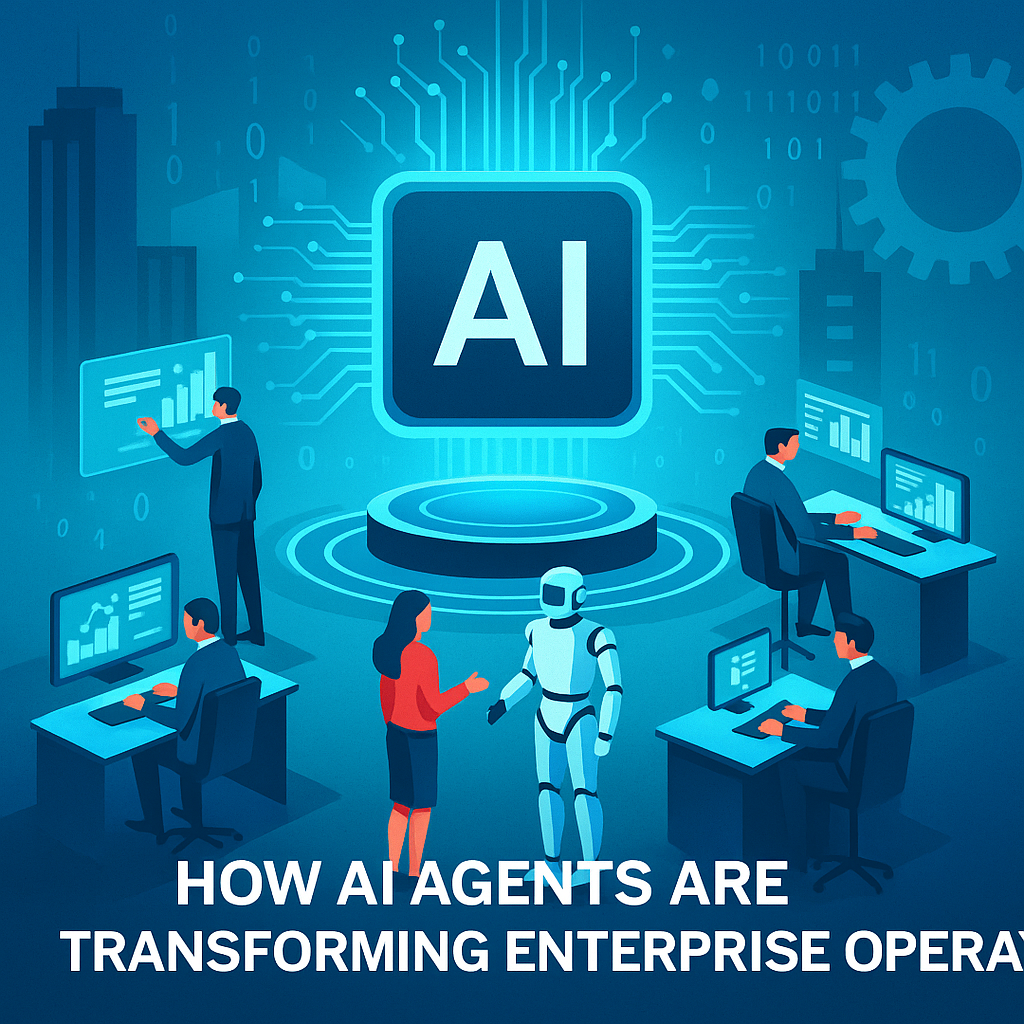What Is Agentic AI—And Why It Matters


1 From "smart tools" to autonomous agents
Most organisations already use assistive AI: models that draft e‑mails, summarise documents, or suggest code. These systems are helpful, but they wait for explicit instructions.
Agentic AI (sometimes called autonomous AI or AI agents) pushes one step further. An agent receives a goal—not a series of keystroke‑level commands—and decides:
- What sub‑tasks must be completed
- Which tools or services to invoke for each step
- When to loop back, evaluate output, and adjust strategy until the goal is met
In short, agentic AI can plan, act, and self‑correct within a defined scope—much like a junior employee who knows the objective and works out the details.
2 Why the shift is happening now
| Driver | What changed in 2024–2025 |
|---|---|
| Cheaper, faster language models | Token costs have fallen > 95% in 18‑months; sub‑second inference enables multi‑step reasoning loops. |
| Tool‑use frameworks | Open‑source libraries (e.g., LangChain, crewAI) and protocols such as MCP standardise how agents call external APIs. |
| Agent‑centric research | Award‑winning papers on tool‑augmented reasoning, memory architectures, and "swarms" show dramatic gains on complex benchmarks. |
| Real‑world validation | Early systems now outperform human specialists in narrow tasks: code refactoring, penetration testing, campaign budget pacing. |
Technically, the ingredients existed earlier. Economically and architecturally, they only converged in the past two years—making commercial‑grade agents viable.
3 What makes an AI system "agentic"?
| Capability | Assistive AI | Agentic AI |
|---|---|---|
| Initiative | Executes a single prompt | Generates and organises its own task list |
| Memory | Limited to current context window | Writes results to vector / graph storage, recalls relevant lessons |
| Tool orchestration | User selects tools | Agent chooses APIs, databases, or other agents as needed |
| Self‑evaluation | None—user judges output | Runs critique loops, retries failures, escalates exceptions |
| Autonomy guard‑rails | Not essential | Must have goal bounds, cost limits, audit trail |
Without memory, tool use, and self‑critique, a model remains a powerful autocomplete engine—not an agent.
4 Why agentic AI matters for business
Cost efficiency
Agents collapse multi‑person workflows—research, drafting, compliance checks—into seconds. Early pilots in digital marketing show campaign setup times down 70% and copy‑iteration costs near zero.
Scalability without headcount
Because each agent instance is software, spinning up "extra capacity" is as simple as allocating more compute. Seasonal surges no longer require temp hires.
24/7 operation with perfect auditability
Agents don't sleep; they do log every decision. That audit trail is a boon for regulated industries (finance, health, public sector).
New business models
Entire "business‑in‑a‑box" offerings—like QuantumVerse's forthcoming QV Marketing—become feasible. Entrepreneurs can launch white‑label agencies, recruiting shops, or micro‑SaaS products without traditional staffing.
Data flywheels
Each completed task feeds outcome data back into fine‑tuning. The system gets smarter autonomously—creating a compounding competitive moat.
5 Real‑world use cases
| Sector | Agent's mission | Impact so far |
|---|---|---|
| Digital marketing | Generate brand kit → deploy ads → A/B‑test creatives → optimise budget | SMBs obtaining agency‑grade campaigns with no in‑house staff |
| Recruiting | Source résumés → reach out → schedule interviews → draft offer letters | Early pilots cut recruiter workload by 60% |
| Cybersecurity | Continuous penetration testing → rank vulnerabilities → open Jira tickets | Agents now match senior pentesters on OWASP coverage |
| Finance ops | Reconcile transactions → flag anomalies → propose journal entries | Mid‑market CFO teams report month‑end close in 30% less time |
6 Designing agentic systems responsibly
- Define hard boundaries. Give agents explicit scopes ("spend up to $X per day", "never email external contacts") and monitor budget usage.
- Implement layered memory. Short‑term scratchpad + long‑term vector or graph storage ensures context without runaway token costs.
- Build deterministic checkpoints. Insert human approval gates for irreversible actions (signing contracts, publishing ads).
- Encrypt and log everything. Immutable logs enable forensic analysis and regulatory compliance.
- Test like software, observe like operations. Use unit tests for task chains and APM‑style dashboards to watch live agent fleets.
7 Where agentic AI is heading next
- Agent swarms: specialised agents collaborating, negotiating, or even competing inside a sandbox, producing emergent solutions.
- Cross‑enterprise marketplaces: agents from different vendors exchanging services securely via protocols such as A2A and MCP.
- Domain‑specific brain implants: vertical‑tuned agents (legal, medical, manufacturing) reaching expert‑level decision quality, supervised by humans.
- Fully automated enterprises: from marketing agencies to small e‑commerce brands, entire companies operated chiefly by software, with owners guiding strategy and client relationships.
8 Key takeaways for leaders
- Autonomy is the new force multiplier. Tools save minutes; agents can save entire head‑counts.
- Start small, but think agent‑first. Identify one bounded workflow where an autonomous loop can deliver immediate ROI.
- Governance is non‑optional. The same autonomy that drives value also introduces risk; build guard‑rails early.
- Data ownership compounds advantage. Your usage data is the flywheel that keeps agents ahead of off‑the‑shelf models.
- Prepare for new competitors. In an agent economy, a solo founder—or stay‑at‑home parent—can stand up a business in weeks. Market moats must shift from workforce scale to insight and brand trust.
Closing thought
Agentic AI marks a turning‑point similar to the move from manual spreadsheets to cloud ERPs—except the jump in leverage is orders of magnitude larger. Organisations that master autonomous agents today won't just improve efficiency; they'll unlock completely new business models and revenue streams. Those that wait may find themselves competing against companies run mostly by code—and losing.
Now is the moment to experiment, set standards, and build the guard‑rails that will let your agents operate safely at scale. The enterprises—and entrepreneurs—who move first will shape the rules for everyone else.

About the Author
Deon Joseph is Product Marketing & GTM OPS analyst at QuantumVerse AI.
Connect on LinkedIn